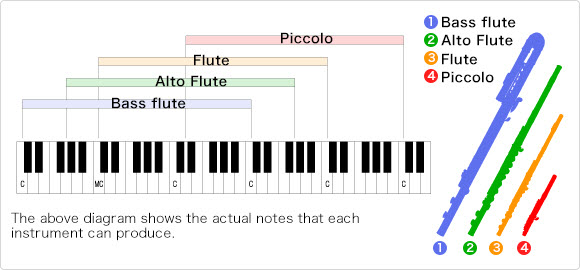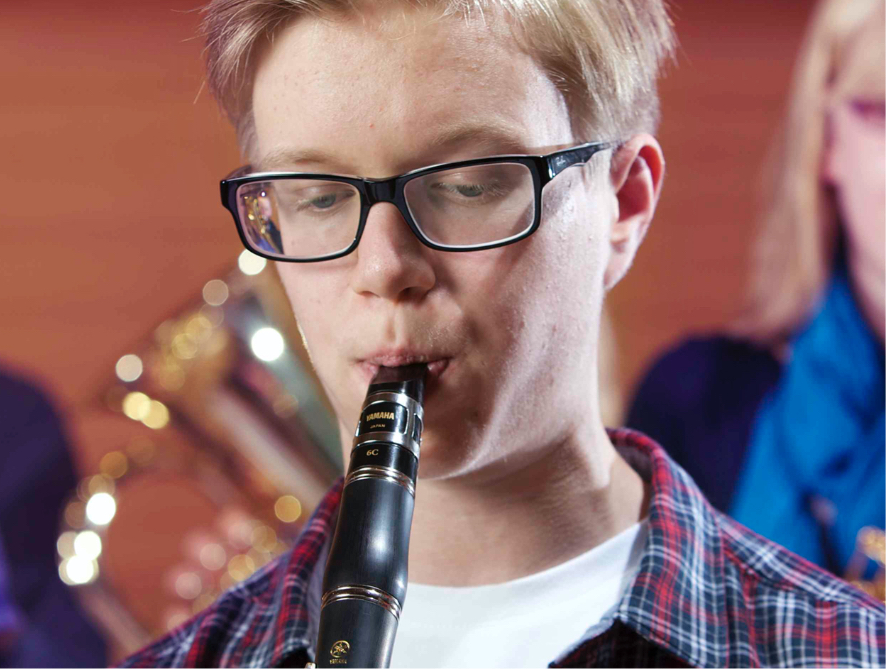Genealogy of the Flute Family
There’s a long and fascinating history behind this woodwind.
The flute has its roots in ancient times, with a history that is perhaps longer than any instrument other than the recorder.
Let’s take a look at some little-known facts about this seminal woodwind.
The First Flutes Were More Like Recorders
The flute has its origins in the reed pipe. This works on the same principle as the grass whistles that children make by snapping off stalks of grass and blowing into them.
Transverse flutes (held horizontally like today’s modern flutes) made out of animal bones were used in Europe in the Paleolithic era. However, it was not until the sixteenth century, during the Renaissance period, that prototypes of today’s flute first emerged.
The term “flute” was originally applied both to pipe instruments held sideways (i.e., transverse) and those held vertically. This explains why, up until around the middle of the eighteenth century (the era of Baroque music), the word “flute” was commonly used to describe the vertically held recorder. To distinguish the transverse flute from the recorder, it was referred to in Italian as the flauto traverso, in German as the Querflöte, and in French as the flûte traversière — all of which mean “sideways held flute.”
Early flutes did not offer keys. Flutes in the Renaissance period had an extremely simple construction, consisting of a cylindrical body with an embouchure hole and (usually) six finger holes. They could also only produce certain semitones.
In the latter half of the seventeenth century, flutes with a conical body and a single key began to appear. With this mechanism, for the first time virtually all semitones could be played. Today this instrument is known as the “baroque flute.”
Theobald Boehm, a German wind instrument manufacturer, essentially created the modern-day flute, which he demonstrated at the Paris Exhibition of 1847. This instrument had a metal tube with numerous keys attached. With earlier flutes, it had been difficult to produce a good sound, and the intervals between the notes had been variable. Boehm’s instrument overcame these shortcomings and was a dramatic improvement over previous flutes. It included a lip plate — a curved, oval-shaped metal plate that is connected to the body of the flute by a component underneath it known as a riser. This was created so that a metal flute would have the same thickness as a wooden flute at this point.
The Piccolo
The piccolo is approximately half the length of the flute and uses the same fingering techniques. At first glance, the piccolo looks like a miniature replica of the flute. On closer inspection, however, various differences are evident. First, there is the material used for the body. While most flutes are made of metal, nowadays the majority of piccolos are made of wood. This is because the piccolo has a higher register, and metal piccolos can sound too piercing and therefore not blend well with other instruments. Second, the main tube of the piccolo is cone-shaped (conical), tapering off toward the tip. The flute used to be the same shape, until Theobald Boehm adopted the fixed-thickness cylinder in the nineteenth century, establishing this new profile. However, the tapered shape is more suitable for the register of the piccolo. Finally, there is the embouchure hole. The type of embouchure hole normally used on the piccolo today has no lip plate. All these features make the piccolo look like the flute of yesteryear.
The Flute Family
It is not unusual for a performer who plays the flute to switch to other members of the flute family: the piccolo, alto flute and bass flute.
As shown in the illustration below, the piccolo is pitched an octave higher than the flute and produces a brilliant, high-pitched sound. With a length of approximately 30 cm, the piccolo resounds loudly in the performer’s right ear when the instrument is played. The alto flute has a slightly gentler sound, while the bass flute boasts a total tube length of around 130 cm and is pitched an octave below the flute:

Video Examples
Here are four videos that demonstrate the sonic differences between the members of the flute family.
First, Bach’s Solo Partita No. 2 played on the bass flute:
Next, Bach’s Siciliano on the alto flute:
Here’s Bizet’s l’Arlésienne performed on the flute:
Last but not least, the second movement of Vivaldi’s Piccolo Concerto in C Major on the piccolo:
This posting is adapted from the Yamaha Musical Instrument Guide.
For more information about Yamaha flutes click here.
For more information about Yamaha piccolos click here.














